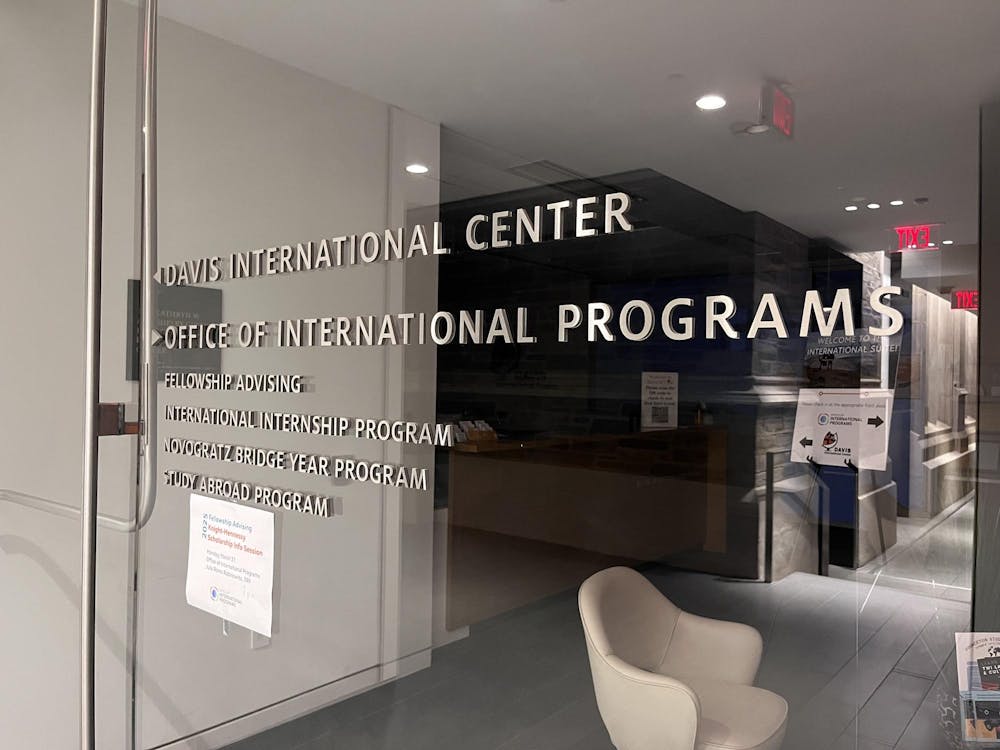Breakout Princeton, which holds trips during both fall and spring vacations, gives students the opportunity to travel to sites around the country and participate in experiential learning about specific civic issues.
This fall, seven trips were offered — up from four last spring — and they visited places ranging from Kansas to South Dakota.
Several student participants lauded the program as a unique way to study relevant public issues in depth. Liz Parsons ’11, a co-leader of the trip “Green Design in Greensburg, Kansas,” said she was initially drawn to the history of that town. Greensburg was devastated by a tornado in 2007, and its city council passed a resolution to rebuild in accordance with some of the most ambitious standards for green design.
Parsons and co-leader Megan Prier ’11 led a group volunteering with Greensburg GreenTown, a nonprofit group coordinating the rebuilding. “Our project for GreenTown consisted of creating four presentations to help them educate the local community about green design and sustainable lifestyle choices, and led us to talk with a wide cross-section of the town,” Prier said. “Although the trip was designed to focus on green design, it became about so much more: religion, small-town community and politics, sustainable food and agriculture etc.”
Over the course of the week, the trip participants worked with community partners involved in the green construction to get a more complete understanding of the complex issues involved.
Ginny Weismann ’12 and Nisha Rao ’12, the co-leaders of “Stigma of Mental Illness in New York City,” explained that they came up with the idea for their trip after observing how people with mental illness around them were treated.
“Seeing how much societal stigma there was made me want to do something about it,” Rao said. The two began organizing the trip last semester and into the summer. With advance planning, they were able to overcome the obstacle of finding a site willing to accept the Breakout Princeton group despite privacy concerns.
James Bryant ’10, who led “The rule of law on the Pine Ridge Reservation in South Dakota” said his group was able to link together learning and service.

“Different perspectives were vital to the intellectual foundation of the trip, so [co-leader Pete Florence ’12] and I tried to find community partners in South Dakota that held different views, sometimes radically different views, about the same legal issues,” he said. The group was aided by Mark Vargo ’85, the U.S. attorney responsible for prosecuting drug crimes on the Pine Ridge Reservation.
Vargo helped the students get in touch with a diverse group of people, including other U.S. attorneys, tribal officials and District Court Judge Jeffrey Viken, a former U.S. attorney and federal public defender with deep ties to Pine Ridge and a long history of service there.
The group also met with tribal law enforcement and court officials, representatives from the nonprofit organization Dakota Plains Legal Services, Oglala Sioux Tribal Court Chief Judge Patrick Lee and current and former members of the tribal council.
Breakout Princeton participants were selected in a competitive process, in which applicants were asked to submit an online application as well as a $50 refundable deposit to the Pace Center office by 5 p.m. on Oct. 1. This process was not changed from those used in previous semesters.

Nurkin explained that there has been growing demand for Breakout Princeton spots through the past four semesters. He added, though, that this semester’s 73 participants represent more student placements than last semester, when only 45 of 90 applicants were accepted.
“While we wish we could offer a spot to every student who applies, we are pleased that we were able to meet more of the demand this semester than in the past,” Nurkin said.
Breakout Princeton was listed among the potential recipients of the $90,000 allocated by the USG to the Pace Center. On Oct. 29, the center announced that Breakout Princeton would receive $12,000 as part of a plan developed by the student steering committee overseeing the reallocation. This money would cover costs related to transportation, food, lodging, training and supplies for around 24 additional students.
The selection process
Nurkin said in an e-mail that trip participants are chosen based on several factors, including desire to participate, background, class year, interest and major, as well as responses to the application questions.
The Pace Center then consults an applicant’s director for student life and academic dean to determine whether that applicant is in good academic standing.
Kaitlyn Hay ’10, an art and archaeology major, applied to go on the trip to Greensburg and was not given a spot, though she said she had past experience in engineering and design.
“Even though I’m an arts major, I have an honest interest in green design,” said Hay, who is a senior photographer for The Daily Princetonian.
Katie Rodriguez ’11, a psychology major, was among those rejected by Breakout Princeton after applying for “Stigma of Mental Illness in New York City.” Like Hay, Rodriguez said she felt highly qualified for the trip, having completed internships and research in a very similar field.
The students who did succeed in obtaining spots on Breakout Princeton trips still expressed interest in learning more about the fields they worked in. Hay added that she would consider reapplying if the trip were offered again.







